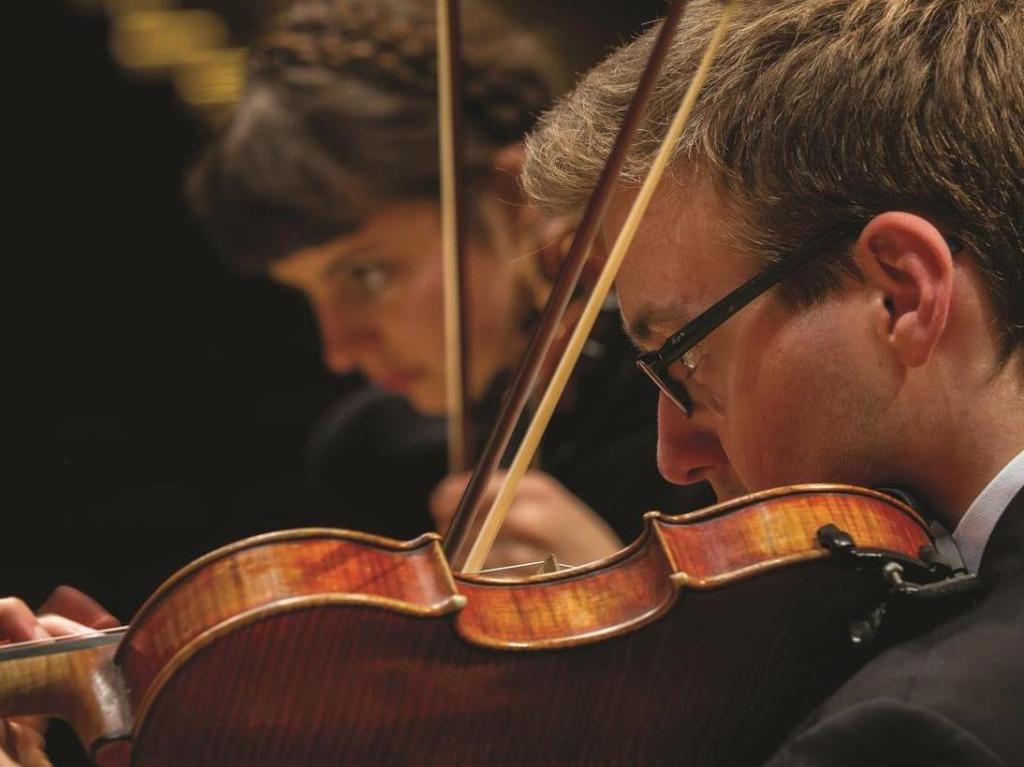Photo by Sav Schulman
23-year-old Harry Sdraulig accepted a big task in writing an ‘In Memoriam’ for the late Australian composer, Peter Sculthorpe. A Master of Music student at the Melbourne Conservatorium, the young composer wrote in his note for the printed program that he chose not to quote Sculthorpe’s music, though the melodic writing in a language of chromatic counterpoint made at least gestural references. Scored for strings alone and percussion, my first hearing of the work found melancholy at the loss of one of Australia’s most revered composers but at nearly fifteen minutes duration the work seemed barely able to sustain the material it presented. The UMSO gave a careful and considered performance of this brand-new work.
Mahler’s fifth Symphony is an extraordinary orchestral achievement in many ways. Principally it surveys the composer’s deep concerns, indeed, neurosis at the turn of the last century; its temperament sits between ecstasy and despair, hope and desperation, life and death. Mahler, a first-rate conductor, was afforded time for composition only in the summer months and this work was written over 1901-02 at his Austrian lakeside villa in Maiernigg. A connoisseur of the German/Austrian musical canon and faced with the decline of Romanticism and the rise of Modernism in Vienna, Mahler set a course to defend the tradition of tonality over the seduction of the new; what Arnold Schoenberg referred to six years later in his atonal second String Quartet as ‘the air of another planet.’ The work is crammed with every possibility of gesture, tonality and form in much the same way that Schoenberg’s Gurre-Lieder explored at roughly the same time.
The five-movement Symphony is in three parts. The work opens unusually with a formal, militaristic funeral march. It has been suggested that this marked Mahler’s realisation of his own mortality – the composer lived for but a decade longer – and the end of an Age. Following the Trauermarsch, the second movement is like a sustained anxiety attack. There is so much information contained in this movement and this young body of musicians gave it their all; it took off like a bolting horse. The second part is a long Scherzo. The third part opens with a famous slow movement: the Adagietto seems to be indelible linked to the tragic narrative of Visconti’s film, Death in Venice (1971).
Some of the saddest music ever written, a good performance of this movement has the potential to haunt for hours afterwards, as this one did. The Symphony ends with a giddy Rondo-Finale somewhat incongruously brimming with optimism, hope and high spirits. The Symphony is an epic journey, and if there were occasional mishaps along the way, the overall achievement of this performance was high. Praise must go to Concertmaster Arna Morton, who led the strings with unflagging precision and verve and particularly good playing by lower brass. From where I was sitting the orchestra was difficult to balance with the large woodwind section often being overpowered by strings, brass and percussion, but that could be the acoustics of the hall.
Fabian Russell’s direction of this symphonic colossus was clear, often restrained and always insightful; his efforts were warmly acknowledged by the young musicians afterwards with foot-stamping enthusiasm.
Rating: 3 stars out of 5
In Memoriam
The University of Melbourne Symphony Orchestra
Fabian Russell, conductor
Hamer Hall, Arts Centre Melbourne
Friday, 28 August, 2015
This performance was presented by the Melbourne Conservatorium of Music supported by the Sidney Myer and MSO Trust, and the Cecily and Colin Rigg Bequest.





